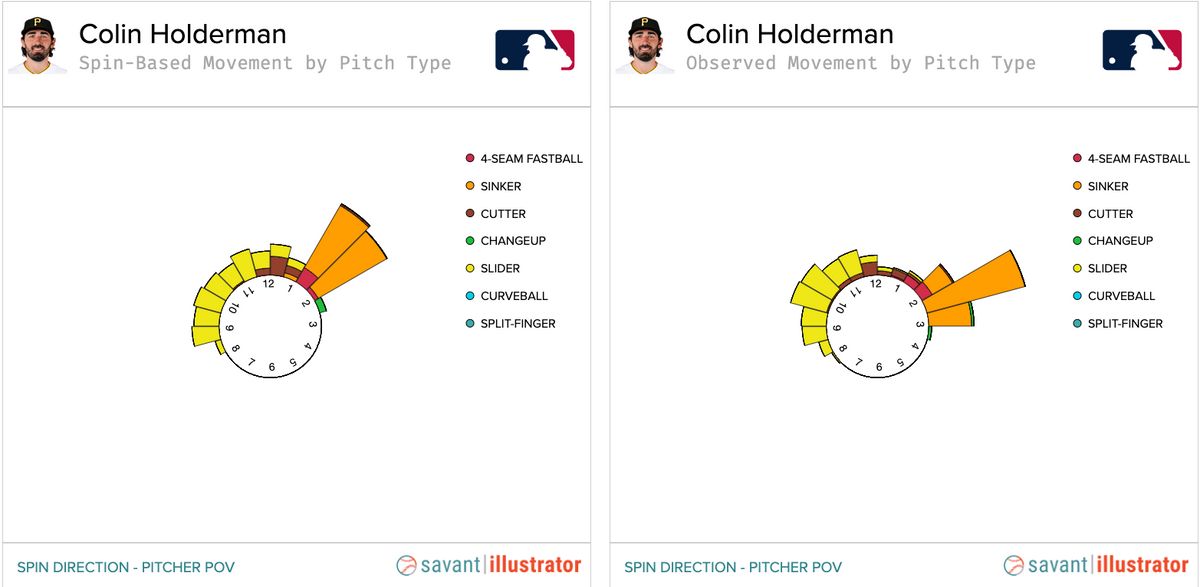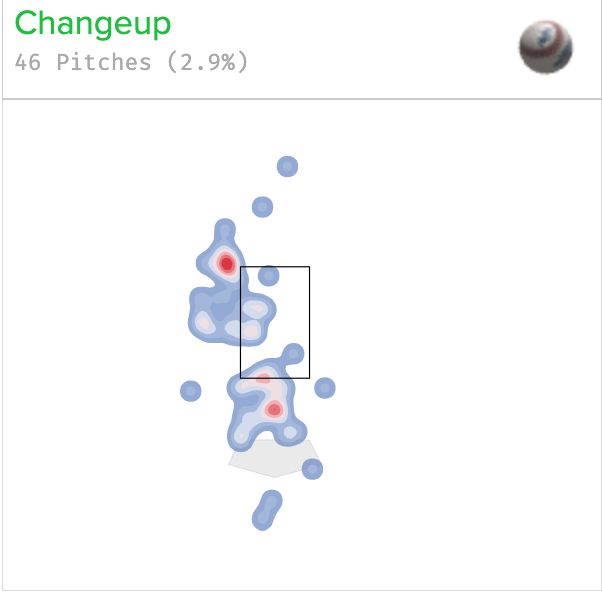BRADENTON, Fla. -- The beauty of the pitchers and catchers portion of spring training is getting to reconnect with pitchers, see what their offseason focus was and, if applicable, find out if they're throwing a new pitch.
The downside is there isn't any feedback yet to see if what they worked on will work.
We're still in the experimental portion of spring training, so we are without raw data, ample video and results, which means all there is to pull from for the first Mound Visit of the year conversations. Those conversations often lead to the best content, and we can either fall back on 2022 data to see how what they said applies to their reworked pitches or take a stab at projecting the future.
Everyone worked on something this winter, but let's focus in on three pitchers who will make an impact this year.
COLIN HOLDERMAN'S REWORKED HIS BREAKING BALLS
Wait, didn't I just write about Holderman's breaking pitches? And wasn't his slider a really effective pitch last year? Why make a change?
Last year, Holderman had two different types of breaking balls: A slider and a cutter. That's still technically true, but both have been tweaked. The cutter is now a power pitch that can get to 92-94 mph, a noticeable jump from last year when it averaged 89.9 mph. The slider is also now a sweeper, selling out for that horizontal movement.
"I think it's going to be a better situation for me," Holderman told me. "If things don't work out, we can always go back, but I feel like I have a good feel for making a ball go left."
The key here is the spin. Not only was the spin of these two pitches similar in terms of how often the ball rotated (2,455 RPM on the slider, 2,412 RPM on the cutter), but also the direction. The cutter came out of the hand with the same spin, but crossed the plate with different movement. This chart from Baseball Savant illustrates that. Spin-based movement is the tilt axis at release, while observed movement is its path towards home:

Being able to do that with a wider gap in velocity and movement does open up some unique possibilities, including pitch mirroring two breaking offerings.
"It just gives me that extra layer of if they see that spin, maybe they think it's one and I get a swing and miss, compared to what I got last year," Holderman said.
The Pirates wanted to get more whiffs out of their bullpen this winter, but were ultimately fairly quiet in that area. Holderman's slider had a 41% whiff rate last year, but the cutter had just a 6.7% rate. Could the latter increase this year?
"Hey, let's see what we've got," Holderman said with a smirk. "I think we're in the right spot."
ROANSY CONTRERAS' NEW FOCUS
It's hard to fully evaluate Contreras' 2022 season between the starting and stopping and trips between the majors and minors. There was definitely plenty of positives to point out, like him making a huge jump in innings (75 competitive innings in 2021 to nearly 130 last year) and him showing his pitches play in the majors leagues.
One pitch that didn't play, however, was the changeup. Some of it comes down to usage -- he threw it only 2.9% of the time in the majors last year -- but he didn't get a single whiff with it last year.
Instead, the curveball was Contreras' third offering and the preferred secondary offering against left-handers. The results were good (.190 batting average, .246), though the expected stats based on the peripherals were not. A .306 xWOBA is high for a curveball that needs to be a strong secondary offering, and it was clearly a third pitch. It has spin and potential, but Contreras leaned on his fastball and slider primarily in his rookie year.
Preparing for year two, he wants the changeup and curveball to play a bigger role.
“The main thing right now is to just throw those pitches around the strike zone," Contreras said via interpreter Stephen Morales. "Just work on that because there’s proof that the more strikes you throw, the more chances you have to be successful."
Getting it into the zone is the first half of the equation. He also needs to more consistently bury it:

The changeup is the pitch to watch here. It spins and breaks similarly to the fastball, which is ideal for fooling hitters with velocity. If that velocity for the fastball holds, it's going to make that changeup better.
“My changeup has the same action as my fastball," Contreras said. "I can see the surprise effect on their faces when I throw a really good changeup.”
MIKE BURROWS' FOURTH PITCH
Burrows has risen from 11th-round pick to a member of the 40 man roster based off of a three-pitch mix of four-seamer, curveball and changeup. The changeup took a big step forward last year, to the point that he started to occasionally throw it against right-handers, too.
That's not quite ideal, but perhaps a bit necessary to keep right-handers off of his fastball. Late in the year, he started to experiment with a potential slider while still in the throwing program. It didn't get too far in-season, but he knew he wanted to explore this further.
"I knew that offseason I wanted to add something," Burrows told me. "It was obvious I wasn't going to throw it right now. It's a really bad time to add a new pitch into the mix."
It's still developing and he's going to pick people's brains on the pitch this spring, but he now has something that can get some real horizontal movement. See how it compares to the curveball:
Couple of Mike Burrows videos. First is his curveball. Second is his new slider.
— Alex Stumpf (@AlexJStumpf) February 16, 2023
Really can see how they move differently pic.twitter.com/SbX9CIqlPu
Those are two distinct pitches, which was always the goal.
"Initially it's about messing around with grips, but also finding something that you can be consistent with and it's not going to hurt your other pitches," Burrows said. "My fastball won't start blending into a cutter, the curveball won't become more slurve-y because of the slider. The changeup cuts. There has to be separation between all of them. It can't start bleeding into other thing and take away from the three things that did well."
Burrows will almost surely get called up to the majors at some point this season. Having that extra pitch can only help him when planning for major-league hitters.

